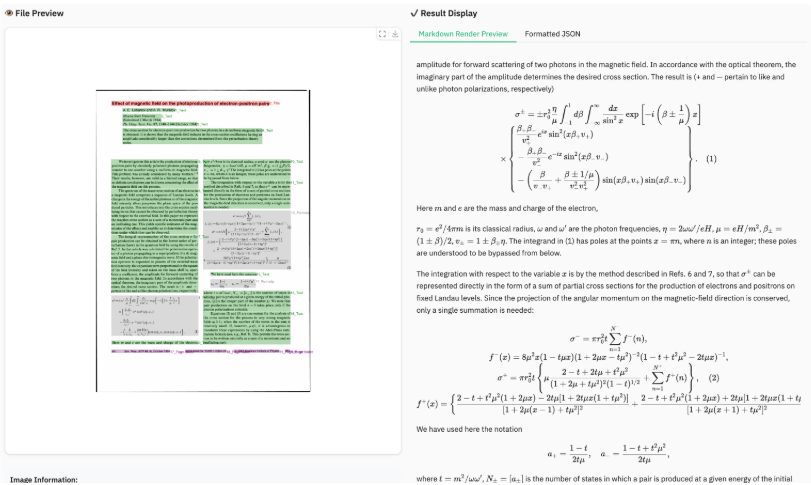Recently, a multilingual document parsing model called dots.ocr has attracted widespread attention in the AI field. This lightweight vision-language model with 1.7B parameters has become a rising star in the document processing field, thanks to its excellent performance and unified layout detection and OCR capabilities.
Lightweight and Efficient: 1.7B Parameters Achieve SOTA Performance
dots.ocr is built on a language model with only 1.7B parameters, which allows for faster inference compared to many document parsing tools that rely on larger models. It can process a single page of PDF in just a few seconds. Despite its smaller size, dots.ocr performs exceptionally well in text, table, and reading order parsing, achieving state-of-the-art (SOTA) levels. Its formula recognition capability is even comparable to large models like Doubao-1.5 and gemini2.5-pro. This efficient performance makes it an ideal choice for developers and enterprises.

Multi-language Support: Powerful Ability to Cover Hundreds of Languages
dots.ocr demonstrates excellent performance in multilingual document parsing, especially showing significant advantages in handling low-resource languages. The model supports 100 languages, including Chinese and English, and can accurately identify text content and layout elements in multilingual documents. Whether dealing with multilingual mixed documents or complex language environments, dots.ocr provides stable parsing results, offering strong support for global application scenarios.
Precise Layout Detection: Comprehensive Parsing of Document Elements
In terms of document layout detection, dots.ocr shows powerful capabilities. The model can accurately identify various layout elements such as titles, paragraphs, images, and tables in documents and precisely label their positions and categories. Thanks to its unified vision-language architecture, dots.ocr avoids the complexity of traditional multi-model pipelines, simplifying the processing workflow while maintaining good reading order, ensuring that parsing results conform to the logical structure of the document.

Table and Formula Parsing: High Accuracy and Format Retention
dots.ocr's performance in table and formula parsing is particularly impressive. The model can accurately detect the boundaries, cell positions, and content of tables, providing highly accurate extraction results suitable for scenarios requiring structured data. In formula recognition, dots.ocr not only handles complex mathematical formulas but also retains the original layout and outputs them in LaTeX format, greatly facilitating academic research and professional document processing. Although there is still room for improvement in handling specific details, its overall performance is already comparable to industry-leading models.
Application Scenarios and Limitations
The fast processing capabilities and multifunctional features of dots.ocr make it have great potential for wide application in various scenarios, such as document digitization, academic research, and data extraction. However, the current model has not yet been fully optimized for high-complexity tables and formulas, and it does not support image content parsing at this stage. Additionally, when the character pixel ratio of the document is too high or contains continuous special characters (such as ellipses or underscores), parsing may encounter issues. It is recommended to adjust the image resolution or use specific prompt words to optimize the results. The development team stated that in the future, they will further optimize the model, enhance the ability to parse tables and formulas, and explore more general vision-language perception models.
An Innovation Benchmark in Document Parsing
We believe that the release of dots.ocr marks a new height in document parsing technology. Its lightweight design, unified architecture, and multilingual support break through the limitations of traditional OCR tools, providing developers with more efficient and flexible solutions. In the future, as the model continues to be optimized for high-throughput processing and complex scenario support, dots.ocr is expected to become a core tool for intelligent document processing. Conclusion: dots.ocr, with its lightweight architecture of 1.7B parameters, outstanding multilingual parsing capabilities, and efficient processing speed, has injected new vitality into the document processing field. From precise layout detection to powerful table and formula parsing, this model is redefining the AI-driven document parsing experience.










